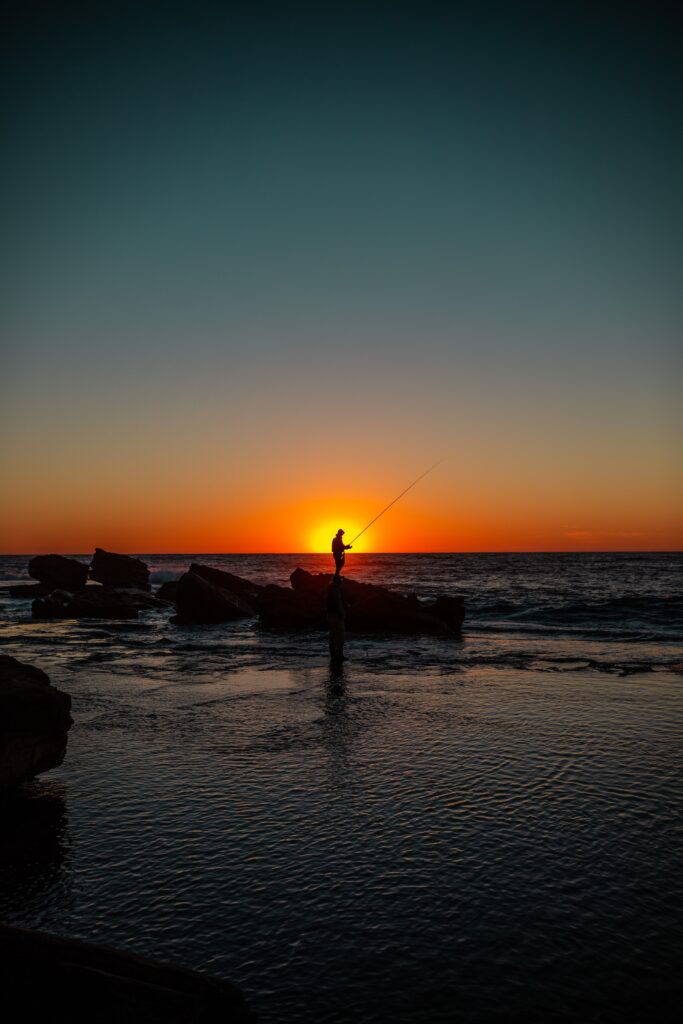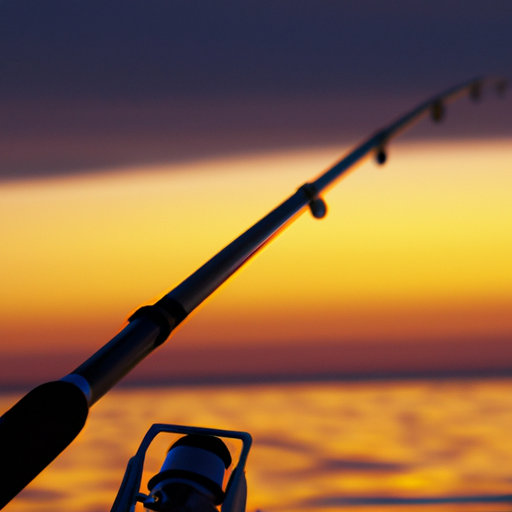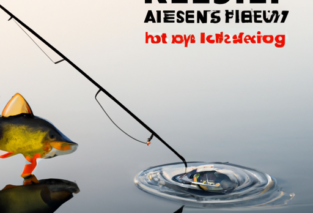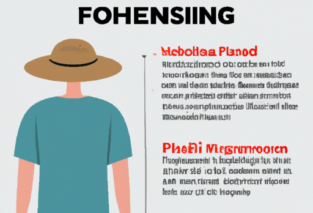Are you a beginner in boat fishing and looking for some helpful tips and tricks to get started? Look no further! “Getting Started With Boat Fishing: Tips And Tricks” is your ultimate guide to mastering the art of fishing from a boat. Whether you are a seasoned angler or completely new to fishing, this comprehensive product provides you with essential techniques, expert advice, and insider secrets to enhance your fishing experience. From selecting the right equipment to understanding different fishing techniques, this product covers it all. So, grab your fishing gear, hop on a boat, and get ready to embark on an exciting fishing adventure!
Choosing the Right Boat
Considerations for Boat Size
When it comes to choosing the right boat for fishing, size matters. Consider the number of people you’ll be fishing with, the type of fishing you’ll be doing, and the waters you’ll be navigating. If you plan on fishing alone or with just a couple of friends, a smaller boat may be suitable. On the other hand, if you’ll be fishing with a larger group or in rough waters, a bigger and more stable boat would be a better choice. Take into account factors such as storage space, seating capacity, and the boat’s overall weight capacity to ensure it meets your specific needs.
Types of Boats for Fishing
There are various types of boats designed specifically for fishing. Each type offers its own advantages and is suited for different fishing styles. Let’s explore a few popular options:
-
Bass Boats: These boats are ideal for freshwater fishing, especially for bass. They are designed for speed and maneuverability, with features like low gunwales and a large open cockpit.
-
Pontoon Boats: Pontoon boats are stable and offer ample seating and storage space, making them great for leisurely fishing trips with friends and family. They are especially well-suited for calm waters and can accommodate larger groups.
-
Center Console Boats: These boats are versatile and popular for saltwater fishing. With an open deck and a console in the center, they provide easy access to all areas of the boat and are perfect for casting and reeling in big game fish.
-
Inflatable Boats: If you’re looking for a portable and affordable option, inflatable boats are worth considering. They are lightweight and easy to transport, making them suitable for smaller bodies of water and solo fishing adventures.
Remember to choose a boat that matches your fishing preferences, budget, and the waters you’ll be exploring. Research different boat types and consult with experienced anglers or boat dealers to find the perfect fit for you.
Gathering Essential Gear
Fishing Rod and Reel
One of the most important pieces of gear for boat fishing is the fishing rod and reel. When selecting your rod and reel combo, consider the type of fishing you’ll be doing and the species you’ll be targeting. For example, if you plan on casting lightweight lures for bass, a medium-action spinning rod and reel would be suitable. However, if you’re going after larger saltwater species, you might opt for a heavy-duty baitcasting setup.
Tackle Box and Fishing Line
A well-stocked tackle box is essential for any angler. Fill it with a variety of hooks, sinkers, bobbers, and other terminal tackle. Different types of lures, such as crankbaits, soft plastics, and jigs, should also be included. Consider the type of fish you’ll be targeting and the fishing techniques you plan to use when selecting your tackle.
Additionally, make sure to have a selection of fishing lines with varying strengths and types. Monofilament, fluorocarbon, and braided lines all have their own advantages and are suited for different fishing situations. It’s a good idea to have a few spare spools of line on hand in case you need to re-spool while out on the water.
Safety Equipment
Never overlook safety when boat fishing. Safety equipment should be a top priority before heading out on the water. Here are a few essential items to have on board:
-
Personal Flotation Devices (PFDs): Ensure that you have enough properly fitting PFDs for everyone on board. Be sure to wear them at all times while on the boat.
-
First Aid Kit: Accidents can happen, so it’s important to have a well-stocked first aid kit on board. Include items such as bandages, antiseptic ointment, pain relievers, and any necessary medications.
-
Fire Extinguisher: This is a crucial safety item to have on board. Ensure that it is regularly maintained and easily accessible in case of emergencies.
-
Navigation Lights: If you plan on fishing during low-light conditions or at night, make sure your boat has the appropriate navigation lights installed.
-
Throwing Line/Buoy: If someone were to fall overboard, having a throwing line and buoy on board can be a lifesaver. Make sure it is easily accessible and everyone on the boat knows how to use it.
By having these safety essentials on board, you can enjoy your fishing adventures knowing you’re prepared for any unexpected situations that may arise.

Learning Fishing Techniques
Casting Techniques
Mastering casting techniques is crucial for successful boat fishing. Whether you’re targeting fish near the shore or casting towards structures such as submerged rocks or weed beds, practicing your casting skills will improve your accuracy and distance. Here are a few tips to keep in mind:
-
Practice Makes Perfect: Head to an open area and practice casting with different lures and weights. Focus on your casting motion and timing, aiming for a smooth and controlled release of the line.
-
Use the Wind: Use the wind to your advantage by casting with the wind at your back. This will help increase your casting distance and accuracy.
-
Target Structure: When casting, aim for specific areas where fish are likely to be hiding, such as rocky outcrops, weed beds, or underwater structures. By targeting these areas, you increase your chances of hooking a fish.
Trolling Techniques
Trolling is a popular technique for boat fishing, especially when targeting species like salmon, trout, or walleye. Here’s how to effectively troll:
-
Choose the Right Speed: Adjust your boat’s speed to match the type of lure you’re using and the target species. Experiment with different speeds until you find the sweet spot.
-
Vary Your Depths: Attach your lures at different depths to cover more areas of the water column. Use downriggers or planer boards to achieve different depths and increase your chances of attracting fish.
-
Pay Attention to Your Surroundings: Keep an eye on your fishing rod tips for any signs of a fish strike. Adjust your speed or change lures if you’re not getting any bites.
Anchoring Techniques
Anchoring is an essential technique when fishing in specific spots or trying to hold your position against currents or wind. Here are some anchoring tips to ensure success:
-
Choose the Right Anchor: Different types of anchors work better in different conditions, so choose an anchor that suits your fishing style and the bottom composition of the water you’ll be fishing.
-
Find a Suitable Spot: Look for areas with structure or where fish are likely to congregate. Once you’ve found the right spot, slowly approach it and drop your anchor. Allow enough time for the anchor to secure in place before beginning your fishing.
-
Use Anchor Tension: Once the anchor is dropped, let out enough line to create tension on the anchor rope. This will help keep your boat stable and prevent it from drifting.
Understanding Fishing Regulations
Researching Local Fishing Laws
Before hitting the water, it’s important to research and understand the fishing laws and regulations specific to your area. Fishing regulations vary by location, species, and even the time of year. Take the time to familiarize yourself with the fishing rules, bag limits, size restrictions, and any specific fishing seasons for the species you plan to target. Many fishing governing bodies have websites or resources where you can easily access this information.
Obtaining Required Licenses and Permits
In most jurisdictions, both freshwater and saltwater fishing require a valid fishing license or permit. Make sure to obtain the necessary licenses for yourself and anyone else who will be fishing on your boat. Licenses are typically available for purchase online, at local sporting goods stores, or through government offices. Carry your licenses with you at all times while fishing to avoid any legal complications.
Familiarizing with Catch and Release Policies
Catch and release is an important practice for conservation and sustaining fish populations. Familiarize yourself with the catch and release policies in your area to ensure you’re handling fish properly and minimizing harm to the fish while still enjoying the experience. Pay attention to rules regarding the use of barbless hooks and proper handling techniques to increase the chances of survival for released fish.

Identifying Suitable Fishing Spots
Utilizing Charts and Maps
Charts and maps are invaluable tools for finding the best fishing spots. Invest in nautical charts or maps of the water bodies you plan to fish in. These resources will provide you with information about the lake or ocean depth contours, underwater structures, and potential fish-holding areas. By studying the maps and charts, you can identify prime fishing spots before you even hit the water.
Observing Weather Conditions
The weather plays a significant role in fish behavior and can greatly affect your success on the water. Pay attention to weather forecasts before heading out and during your fishing trip. Wind direction, barometric pressure, and temperature changes can all impact fish activity. Some species may be more active during cloudy days, while others prefer sunny or overcast conditions. By understanding how weather conditions influence fish behavior, you can plan your fishing trips accordingly.
Considering Seasonal Patterns
Fish behavior varies throughout the year, so it’s essential to consider seasonal patterns in your fishing strategies. Fish may migrate to specific areas during spawning seasons or change their feeding patterns depending on water temperature and other environmental factors. Research the seasonal patterns of the fish species you plan to target to increase your chances of locating them in the right place at the right time.
Mastering Bait and Lures
Choosing Live Bait vs. Artificial Lures
Selecting the right bait or lure is key to attracting fish. Live bait can be highly effective, but it requires proper handling and maintenance. If you decide to use live bait, ensure it is legal in your fishing area and keep it alive and healthy with proper aeration and temperature control.
On the other hand, artificial lures offer versatility and convenience. They come in various shapes, sizes, colors, and actions to imitate natural prey. Experimenting with different types of lures, such as soft plastics, hard baits, and spinnerbaits, can help you discover what works best for your target species and fishing conditions.
Understanding Different Types of Bait
Live bait comes in different forms, and each type has its own set of advantages and disadvantages. Here are a few common live bait options:
-
Nightcrawlers and Worms: Nightcrawlers are a popular choice for freshwater fishing. They are versatile and can be used for various species such as trout, bass, and panfish.
-
Minnows: Minnows are often used to target predatory species, like pike and walleye. They are versatile and can be fished both live or as cut bait.
-
Crickets and Grasshoppers: These lively critters are excellent bait for freshwater fishing, especially for panfish and trout.
-
Shrimp: Shrimp is a popular bait for saltwater fishing, particularly for species like snapper, grouper, and redfish.
Experimenting with Various Lure Techniques
Artificial lures come in a wide range of styles and can be used with various presentation techniques to entice fish to strike. Here are a few techniques to experiment with:
-
Crankbaits: Crankbaits imitate the movement of injured fish and are designed to dive and swim through the water. Vary your retrieve speed and depth to find the most effective presentation.
-
Soft Plastics: Soft plastics, like plastic worms or creature baits, can be rigged in different ways and worked with various retrieval methods. Try Texas rigging, Carolina rigging, or drop shotting to entice fish.
-
Spinnerbaits: Spinnerbaits are excellent for covering large areas of water quickly. Experiment with different blade configurations and retrieve speeds to find the best combination for attracting fish.
Remember, different fish species have different preferences when it comes to bait and lures. Be willing to experiment and adapt your techniques to find what works best on any given day.

Setting Up Your Fishing Rig
Selecting the Right Fishing Line Weight
Choosing the appropriate fishing line weight is essential for hauling in your catch successfully. The line weight you select will depend on the target species, fishing conditions, and fishing techniques you plan to use.
For smaller fish and finesse techniques like trout fishing or light freshwater fishing, a lighter line weight in the 4-8-pound range may be suitable. However, if you’re targeting larger fish or fishing in heavy cover, you might opt for a heavier line weight in the 10-20-pound range. Be sure to match your fishing line weight with the recommended rod and reel specifications for optimal performance.
Attaching Terminal Tackle
Terminal tackle refers to the hooks, swivels, weights, and other attachments that are connected to the end of your fishing line. Properly attaching terminal tackle ensures the effective presentation of your bait or lure and helps secure your catch. Here are a few tips for attaching terminal tackle:
-
Tie Strong Knots: Use appropriate knots to secure your hooks, swivels, and weights. Popular knots include the improved clinch knot, Palomar knot, and uni knot.
-
Use Quality Swivels: Swivels help prevent line twist and tangles. Opt for high-quality swivels that can handle the weight and stress associated with your fishing style.
-
Weights and Bobbers: Attach weights and bobbers to your fishing line as necessary for proper bait presentation. Be mindful of the weight and size of the bobbers to ensure they stay afloat and do not impede your ability to detect fish strikes.
Adjusting the Depth of Your Bait
Fishing at the right depth is crucial for success, as different fish species prefer different depths. Whether you’re using live bait or artificial lures, knowing how to adjust the depth of your bait will increase your chances of attracting fish.
-
Bobber Fishing: Attach a bobber to your fishing line to keep your bait suspended at the desired depth. Adjust the bobber stopper to set the depth, ensuring that your bait is at the same level as the fish you’re targeting.
-
Weights and Sinkers: Attach weights or sinkers to your line to get your bait to sink to the desired depth. The weight should be enough to keep your bait at the right level without dragging it along the bottom.
-
Trolling: Adjust the depth at which your lure or bait is swimming by using downriggers or planer boards. These tools allow you to fish at specific depths by controlling the length of line released.
By mastering the art of adjusting bait depth, you can effectively target fish where they are most likely to be feeding.
Practicing Proper Boat Safety
Wearing Personal Flotation Devices (PFDs)
Personal flotation devices (PFDs), commonly known as life jackets, are a non-negotiable safety item for boat fishing. It’s essential to wear a PFD at all times while on board, regardless of your swimming abilities or boating experience. Choose a PFD that fits properly and is approved by appropriate safety regulations. Ensure that everyone on your boat has a properly fitting PFD available and knows how to use it.
Maintaining Clear Pathways and Secure Anchor
Keeping clear pathways on your boat is crucial for avoiding accidents and ensuring safe movement while fishing. Eliminate any trip hazards, such as loose gear or tangled fishing lines. Secure your fishing tackle and equipment to prevent any sliding or tipping during travel. Additionally, ensure that your anchor is properly secured and won’t unexpectedly come loose while you’re fishing.
Keeping Emergency Equipment Onboard
Prepare for any unexpected emergencies by keeping essential safety equipment on board your boat. In addition to the required safety items mentioned earlier, consider carrying the following:
-
A VHF Radio or Cell Phone: Communication devices are vital for being able to contact emergency services or fellow boaters in case of an emergency.
-
Flares or Distress Signals: These are essential for attracting attention in case of an emergency situation or if you need assistance.
-
A Bilge Pump: A bilge pump helps remove water from your boat if it starts taking on water unexpectedly.
-
A Basic Tool Kit: Carry a selection of tools that would be helpful for minor repairs or adjustments while on the water.
-
Spare Propeller: In case of damage to your main propeller, having a spare propeller on board can save you from being stranded.
Having these emergency essentials on board will give you peace of mind and ensure that you’re prepared in case of any unforeseen events while out on the water.

Navigating the Waters
Learning Navigation Basics
Understanding basic navigation principles will help you navigate safely and efficiently on the water. Familiarize yourself with navigation terms, such as port, starboard, bow, and stern. Learn how to read navigational charts, including understanding symbols, water depths, and potential hazards. Consider taking a boating safety course or consulting with experienced boaters to learn more about navigation and waterway etiquette.
Understanding Buoy and Marker Systems
Buoy and marker systems are essential for safe navigation, especially in unfamiliar waters. Familiarize yourself with the different types of buoys and markers you may encounter, such as channel markers, lateral markers, and special-purpose markers. Each buoy and marker has a specific meaning and indicates navigational information, such as safe passages, shallow areas, or hazards. Understanding these systems will help you navigate with confidence and avoid potential dangers.
Avoiding Shallow Areas and Hazards
Navigating shallow areas and hazards is crucial for both the safety of your boat and the environment. Shallow areas can cause damage to your propeller or even ground your boat if you’re not careful. Here are a few tips for avoiding shallow areas and hazards:
-
Refer to Nautical Charts: Consult your nautical charts to identify any marked shallow areas. Stay within navigational channels and follow recommended routes.
-
Observe Water Discoloration: Shallow areas are often indicated by a noticeable change in water color or the presence of sand or rocks. Be alert and adjust your course accordingly.
-
Use Depth Finders: Utilize depth finders or fish finders to monitor water depths in real time. These devices can help you identify shallow areas before it’s too late.
Be cautious and stay vigilant while navigating unfamiliar waters. Prioritize safety, and take the necessary precautions to avoid any potential hazards.
Staying Mindful of Fishing Etiquette
Respecting Other Anglers’ Space
While out on the water, it’s important to respect other anglers’ space. Avoid anchoring too close to other boats, especially if they are already fishing in a specific area. Give fellow anglers enough room to cast and retrieve their lines without the risk of tangling or interfering with their fishing experience. By practicing good etiquette, you contribute to a positive and enjoyable fishing atmosphere for everyone.
Properly Discarding Fishing Waste
Being mindful of the environment and properly disposing of fishing waste is an essential part of responsible angling. Avoid throwing any litter, such as fishing line, packaging, or plastic bait containers, into the water. Dispose of waste properly in designated bins onshore or carry it back to shore with you. Fishing waste can be harmful to wildlife and the overall health of the ecosystem, so it’s important to do your part in keeping the waters clean.
Sharing Knowledge and Tips with Fellow Anglers
A strong fishing community thrives on shared knowledge and camaraderie. Don’t hesitate to strike up conversations with fellow anglers and share tips, tricks, and information about successful fishing spots or techniques. Respect the experience and expertise of others and be open to learning from them as well. By fostering a friendly and supportive fishing community, you’ll contribute to a more enjoyable and inclusive fishing experience for all.
In conclusion, getting started with boat fishing opens up a world of exciting opportunities for anglers. By considering factors such as boat size and type, gathering essential gear, learning fishing techniques, understanding regulations, identifying suitable fishing spots, mastering bait and lures, setting up your fishing rig, practicing proper boat safety, navigating the waters, and staying mindful of fishing etiquette, you’ll be well on your way to becoming a skilled boat angler. Remember, safety should always be a top priority, and respecting the environment and fellow anglers will ensure the longevity of this beloved sport. So, grab your gear, hop aboard your boat, and embark on unforgettable fishing adventures!






